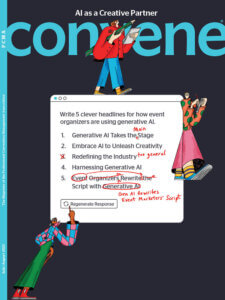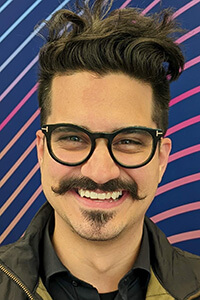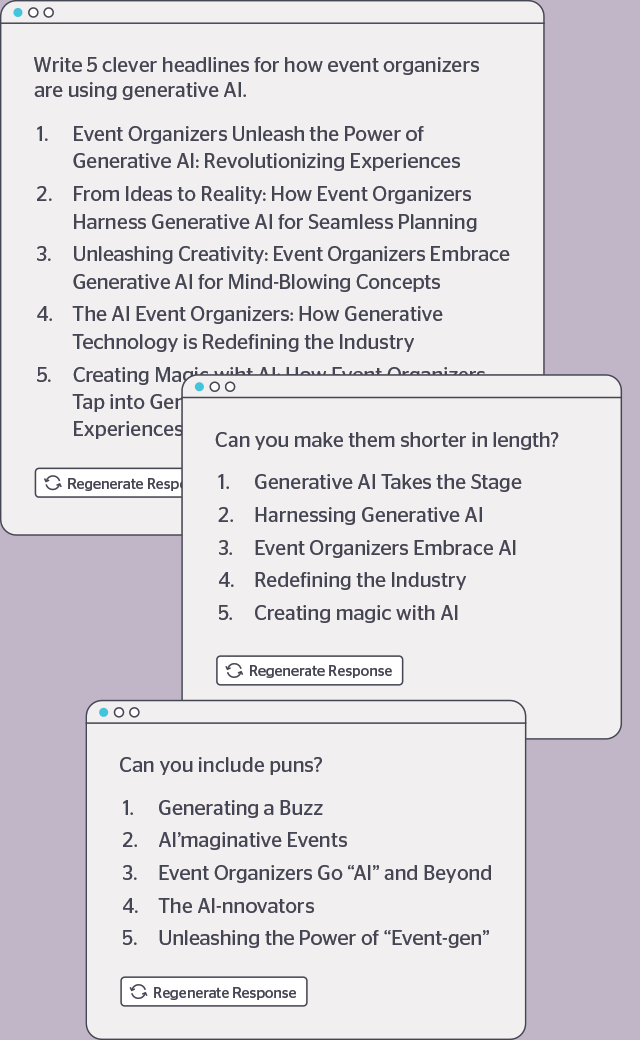
Marc Ghafoorin of Heritage Exposition Services has found a way to train ChatGPT to gives responses that make sense for specific projects he is working on. (Sergio Membrillas illustration)
When he first started experimenting with ChatGPT, Marc Ghafoori, senior vice president of brand strategy for Heritage Exposition Services, found he was getting poor-quality responses.He then began creating chats for specific topics, starting off, he told Convene, with this prompt each time: “’I’m going to provide you with several pieces of information before you explain anything back to me, do you understand?’ I always add ‘Do you understand?’ at the end, so that it can actually spit something back and acknowledge it.”

Part of our July/August cover and CMP Series. (Sergio Membrillas illustration)
Then Ghafoori would go through five to 10 prompts to feed ChatGPT context about Heritage. “And then I would ask: ‘What 20 questions can you ask me to be able to give you more of a background or more information to be able to get an accurate picture for who I am and who our clients are?’”

Marc Ghafoori
Ghafoori said he is very careful not to include specific names or locations — nothing more than general info when engaging with ChatGPT. “If you read the end-user agreement, they sell information to third-party users in a similar way that other social-media platforms do,” he said. “So, you have to avoid that at all costs.”
He finds the tool useful for drafting emails and generating content on social media. “I would say it takes you about 75 to 80 percent of the way there, but you have to reread things, you have to redo a lot of things,” Ghafoori said, adding that the tool has a tendency to go down a rabbit hole or off on a tangent. “Then I have to say, ‘No, no, no, that’s not correct — this is what I was actually intending.’ And then, after I fix what it had written, I’ll feed that back into the system and say, ‘This is how I edited this. Can you please take this into account for future iterations?’”
Ghafoori likens his use of ChatGPT to “onboarding somebody within the company,” he said. “You can’t just throw somebody into the role and then expect them to be full flight on day one. You’ve got to train them.”

Here is an example of how a user might hone the prompts to achieve a goal with the help of generative AI.
Michelle Russell is editor in chief of Convene.
